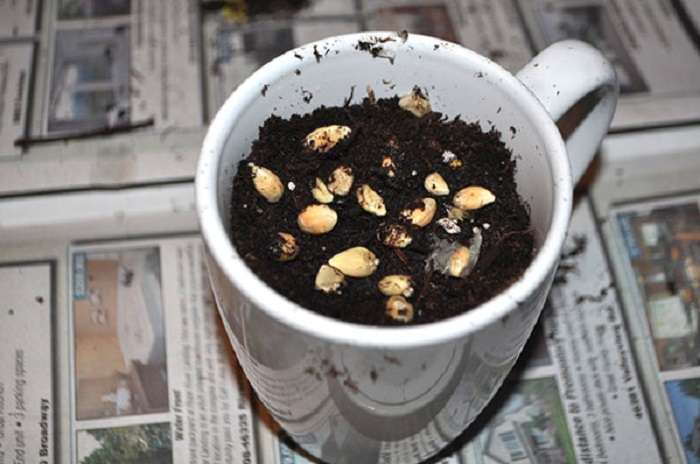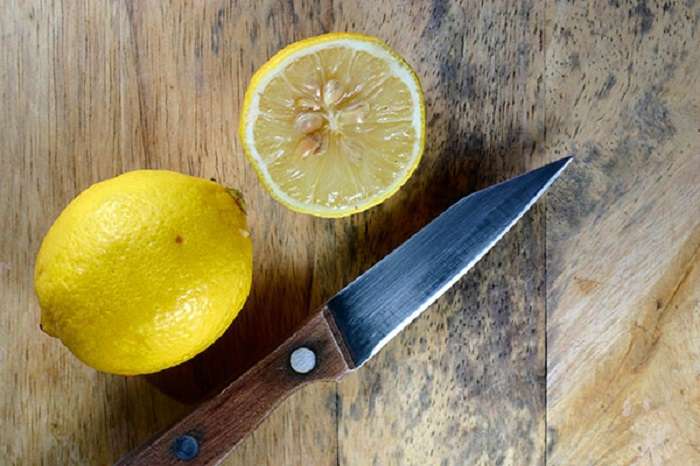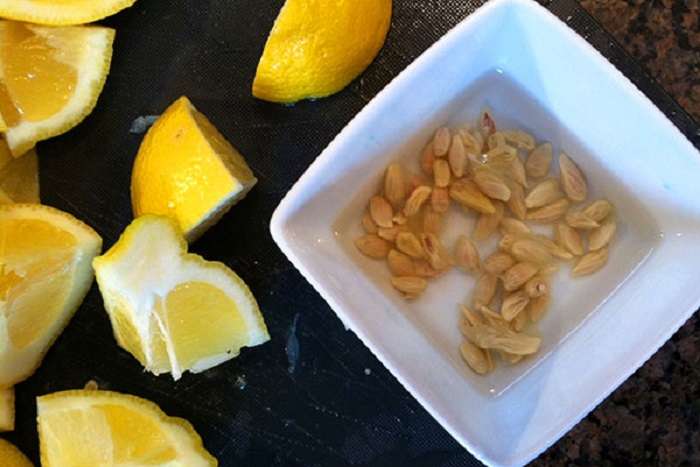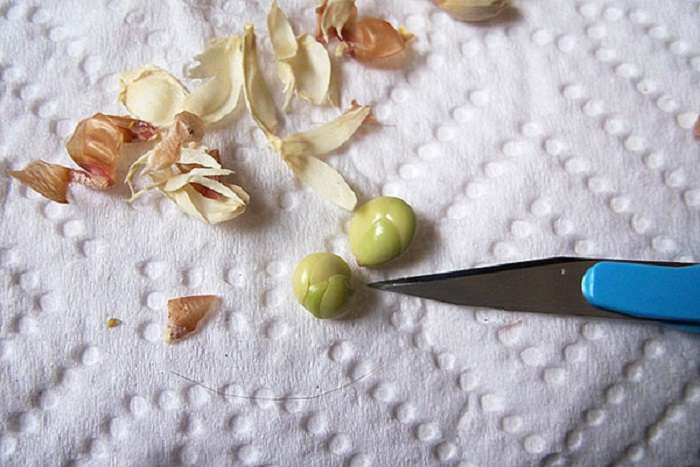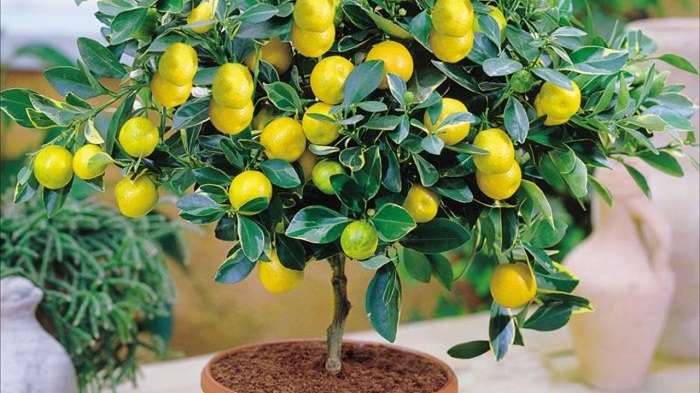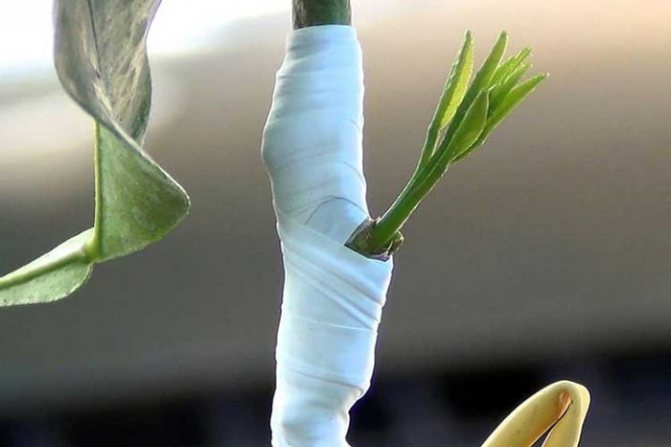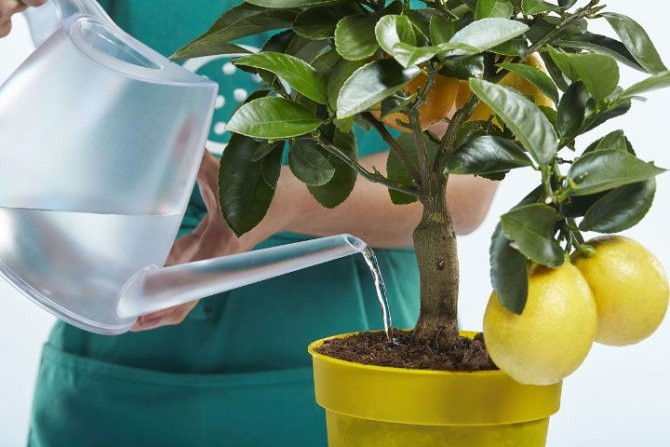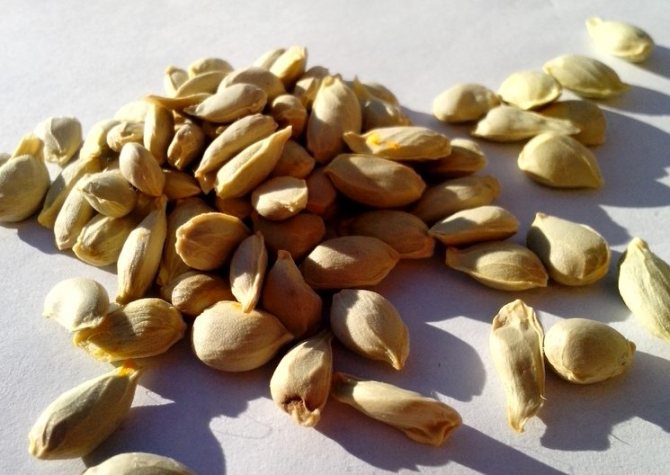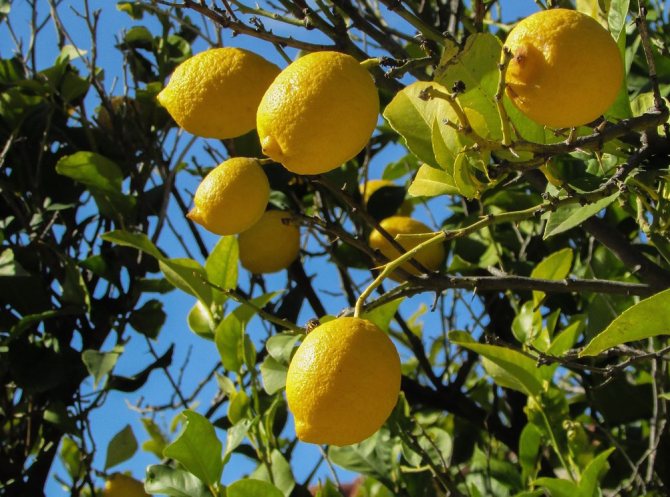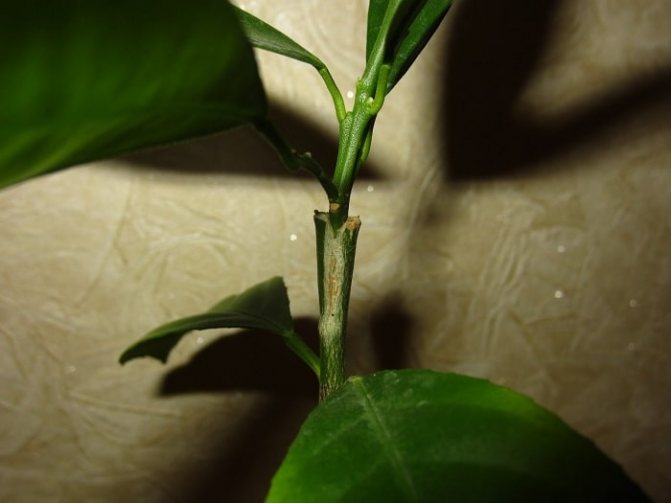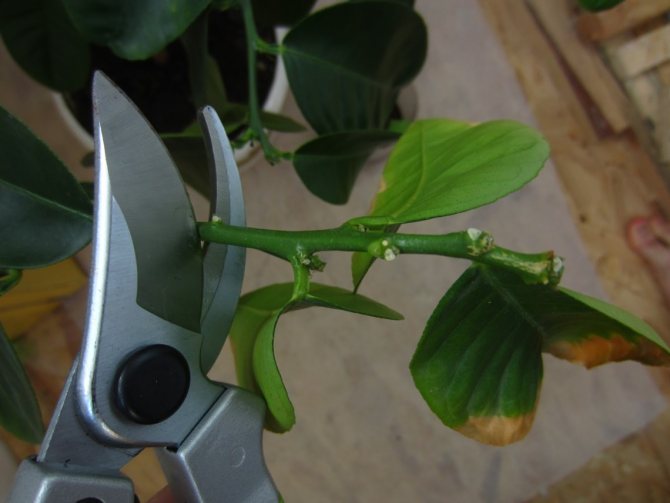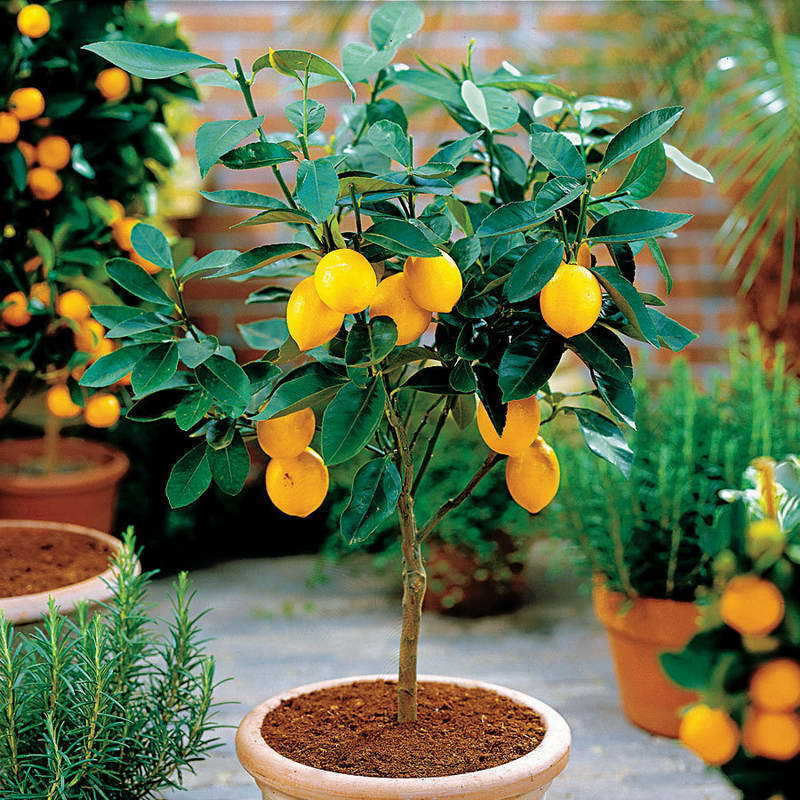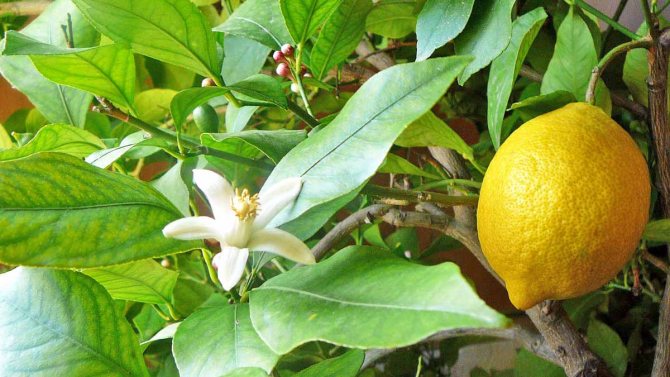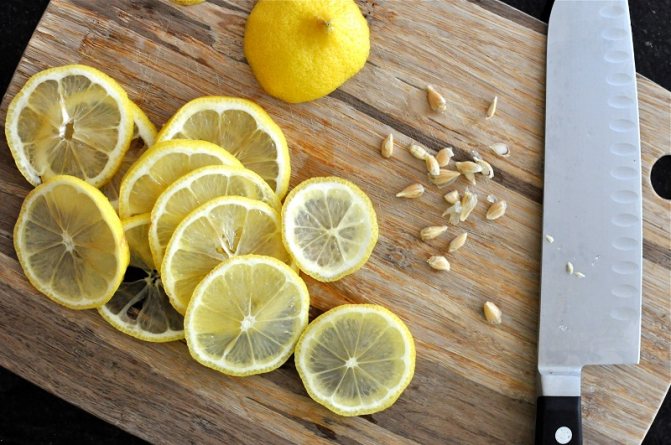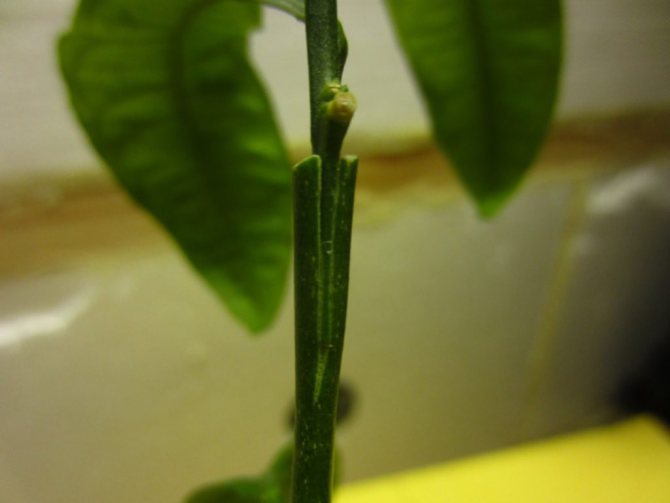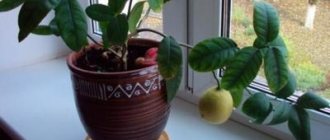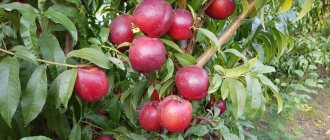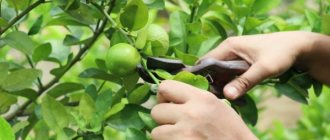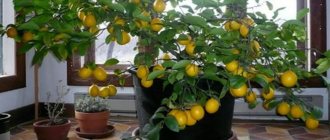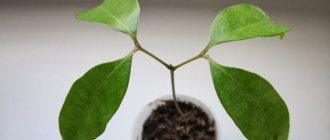This popular citrus can be found in your home. How to grow lemon from seed at home? This evergreen perennial is a visitor from the subtropics; it will not grow outdoors in most regions of our country. But at home, in the apartment he feels quite comfortable. But caring for a lemon growing at home is different from growing it outdoors. Consider how to care for a lemon at home so that the plant decorates your home and delights with the harvest. Homemade lemon fruits have a thinner crust and an intense aroma than those grown outdoors.
The homeland of lemon is Southeast Asia, more than a thousand years ago, these fruits were brought from India, and over time they found popularity in Africa and America.
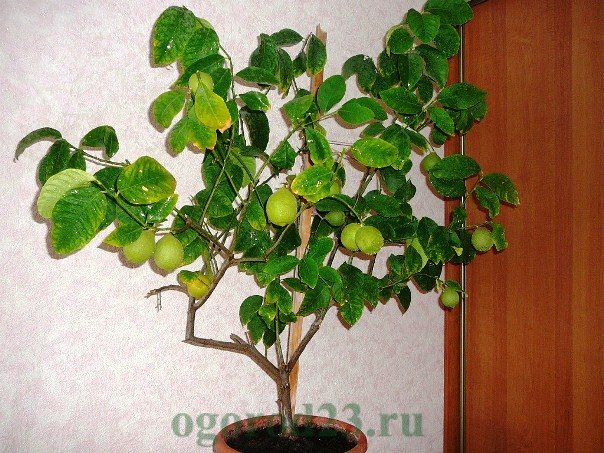
This citrus tree produces flowers several times a year. To grow a lemon from a seed, you need to create comfortable conditions for it: high-quality ventilation, lighting, periodic fertilizing, an individual approach according to the season.
One of the main stages is the selection of quality seeds - this is the guarantee of the future harvest. For planting material, seeds from purchased ripe lemons are quite suitable. Sow many seeds at once so that later you can choose the strongest shoots.
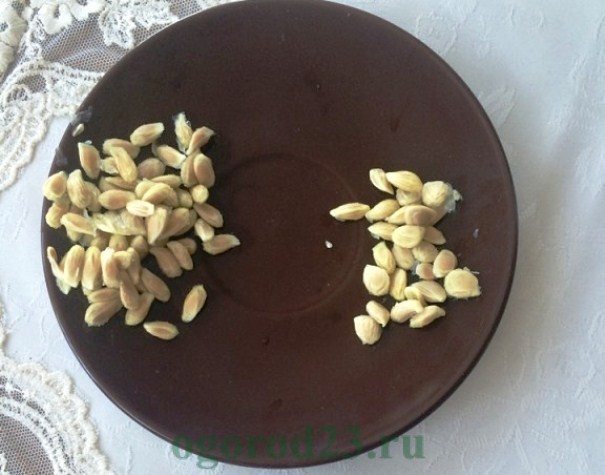

Is it possible to grow a lemon from a seed at home?
People know about the benefits of lemon firsthand. Lemon is an excellent remedy for many ailments. It strengthens the immune system, normalizes hormones, improves vision, and stimulates the digestive tract.
It is used for colds, as it contains a huge amount of vitamin C and many people just like the sour, aromatic taste.
It is possible to grow lemon at home. If you cut a lemon, you can see a lot of seeds. It is quite possible to grow a full-fledged lemon tree from these seeds.
For a person who decides to plant a lemon at home, it is important to take into account the following rules:
- the fruit should be yellow, the most ripe, since if the lemon is green, then due to the fact that it is not ripe, the germs of sprouts in the seeds of such a lemon may not sprout;
- for planting, it is important to choose several large seeds - from 10 to 15 pieces, so that later you can choose a beautiful and actively growing seedling;
- it is important to choose a suitable variety that will grow well at home.
For cultivation, you must choose the right variety of lemon, the fruit must be ripe, the seeds are large
Lemon is an evergreen bush with glossy, fleshy leaves. On them and on the branches of the bush there are many pores that emit essential oils and phytoncides - this is a wonderful lemon scent we all know.
A lemon grows at home as a small tree, but it can be up to three meters. It has small thorns on the branches, the leaves are dark green. Lemon has beautiful small flowers - pink-red or purple on top and white on the inside.
Lemon flower
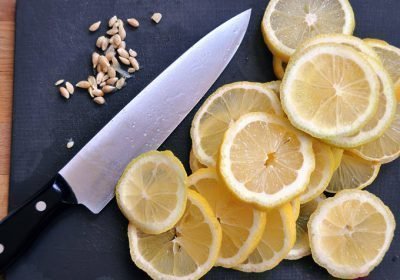

It's just that you won't surprise anyone with a lemon tree now, but a tree with fruits is not so common. But this is a completely feasible task for everyone.
Landing
Let's start from the very beginning. You need to choose the right seeds for planting and prepare the ground. We choose a beautiful, even, ripe lemon fruit. We choose the best from it - large seeds.And we plant in a wet state - there is no need to dry, otherwise they will sprout for a long time or will not germinate at all.
Before planting, you can treat the seeds with any biostimulant for quick germination and the formation of good roots in the future. To do this, prepare a solution according to the instructions for the preparation - and soak the seeds overnight.
It is necessary to prepare containers for sowing and good soil. You can buy seedling pots at the store or use yogurt or sour cream cups for this, cut off plastic bottles. At the bottom you need to make holes and put drainage. It can be shards from pots, nut shells, pebbles, a layer of vermiculite up to 1.5 cm.
Plant a lot of lemon seeds at once - a couple of dozen at once. Firstly, not everyone will grow, and secondly, you will have the opportunity to choose the best ones for further cultivation, and finally, not everyone can tolerate the vaccination well.
Maybe it will seem to someone that the information about the holes in the cups, about the need for drainage is known to everyone and there is no need to write about it in such detail. But I remember myself as a novice gardener and I did not always know all the intricacies of planting and care. And the plants died.
Now you need to prepare loose, fertile soil. Planting lemons in commercial citrus soil or making your own is no problem. We mix humus, leafy earth in equal amounts and add peat and sand for ease. We moisten the earth and lay out the bones in pots. We plant the seeds to a depth of about 2 cm.
The temperature for germination of lemon pits must be at least 18 ° C. To create the best conditions for the lemons to germinate and develop, cover them with cut-off plastic bottles. Or just cover the seed cups with foil and place in a warm place. This will create the conditions for a greenhouse for lemons.
Lemons under plastic bottles - mini greenhouse
You do not need to fill in the seeds after sowing - they can suffocate and mold. It is better not to water at all, but simply spray the ground with a spray bottle. Water only when the ground begins to crack. And after the emergence of lemon shoots, it is also better to observe the low watering regime so that the roots do not rot.
Will the indoor lemon tree bear fruit?
Many people think that growing a lemon from a seed is a thankless job. Since it will take 5, 7, or even all 15 years to wait for fruits from such a lemon, and its fruits will be small in size.
In order not to wait for decades when the lemon tree begins to bear fruit, it must be grafted. This can be done in two ways during the warm season (summer or warm spring):
- Splitting is the preferred form of grafting. It is necessary to take a stalk of a cultivated fruiting lemon. A branch is cut on the seedling, and the remaining stem of the seedling is split. A "wedge" is sharpened on the cutting of a fruiting lemon, which is then introduced into the split in the stem. Next, you need to tie the vaccine with electrical tape. 2-4 buds are left on the cutting of a fruiting lemon, everything else is cut off. The inoculation is covered with a plastic bag. When the vaccine has healed, the bag can be removed.
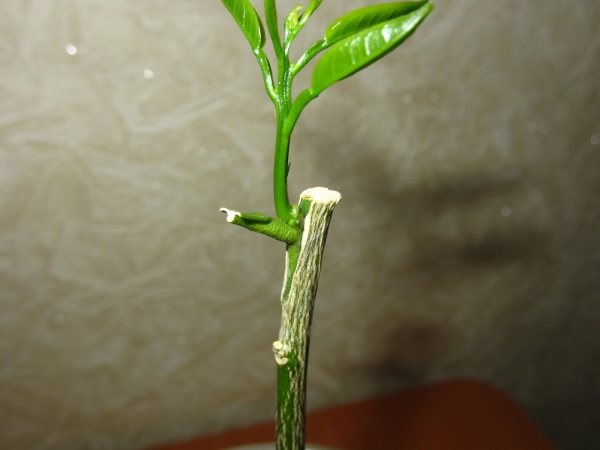

Lemon grafting - by budding or splitting - is necessary for early fruiting
- By budding, the shoots are cut off from the seedling, a 10 cm high "stump" remains from the tree. Then, a sprig of cultivated fruit-bearing lemon is taken. Under each leaf of the twig is the so-called "dormant bud". A slice must be made in front of this kidney. Next, cut off the leaf plate, but leave its petiole. Cut the bark on the "stump" of the seedling and insert the petiole with the cut down. Tie the vaccination site with electrical tape. The stalk of the cut leaf plate will serve as an indicator. If the petiole falls off after 2-3 days, then we can assume that the vaccination was successful, but if it dries up, then the vaccination has failed and must be repeated.
Interestingly, the grown lemon from the seed adapts to home conditions faster and better, it is less picky than cuttings and grafted seedlings.
Why lemon grown from seed does not bear fruit:
Benefits of growing lemon
A large amount of vitamin C and trace elements make it possible to use this citrus in the fight against cold symptoms. Its use contributes to the normalization of hormonal levels and the activity of the gastrointestinal tract.
Lemons grow in countries with warm climates such as Georgia, Turkey, North Africa and Asia. But you can try to grow citrus at home. It will not work to plant citrus in the open field, since it does not tolerate temperature changes, therefore it will quickly die during the first cold snaps.
For cultivation, they use a balcony equipped with a heating system, or a glazed greenhouse. If the tree is grown in such conditions, then a harvest can be expected in a few years.
For cultivation, they use a balcony equipped with a heating system, or a glazed greenhouse. If the tree is grown in such conditions, then a harvest can be expected in a few years.
Soil preparation
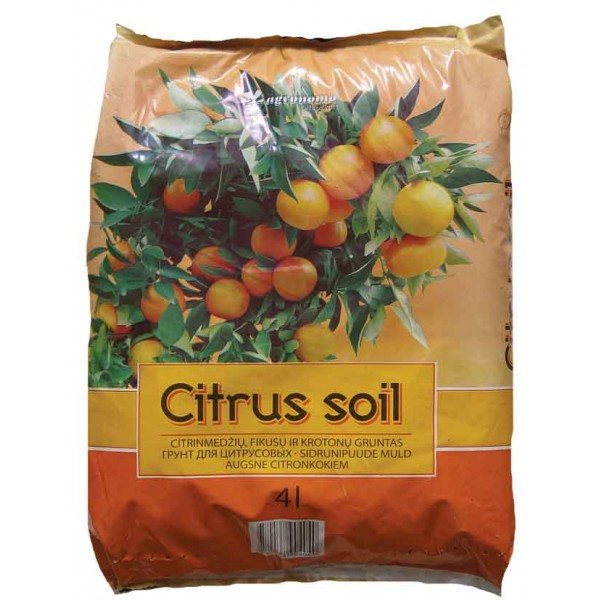

Ready soil
Fruit-bearing lemons prefer to grow on light, well-drained soils that are free from stagnant moisture. You can buy such a primer at any specialized store. Usually manufacturers label such substrates with a laconic inscription "For citrus fruits".
If, due to certain circumstances, it is not possible to make such a purchase, then you can prepare the soil mixture yourself. The main thing to remember is that it should be:
- easy;
- porous;
- breathable;
- moisture permeable.
Coarse river sand, compost, well-rotted manure and turf soil, taken in equal proportions, are suitable for this purpose. Lemons absolutely do not tolerate overdrying an earthen coma. Therefore, if for a number of reasons you are not able to carry out regular, timely watering, you will have to add a hydrogel or perlite. These substances are able to absorb excess moisture, and then also easily give it to the soil.
Keep in mind that compost and manure, in addition to the mass of useful elements, probably contain spores of pathogenic fungi and larvae of harmful insects. If you are preparing the mixture at home, then do not be lazy and be sure to heat it in the oven or warm it up in the microwave. Such a simple step in the future will prevent a lot of unpleasant surprises.
What do young seedlings look like?
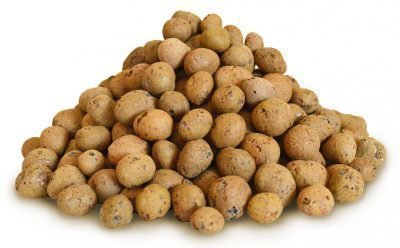

Practice shows that in order to obtain a full-fledged fruiting tree at home, lemon seeds must be pretreated with preparations that stimulate the growth of seedlings and help strengthen the root system of the tree.
- The bones are placed in a solution of Sakhalin sodium humate for 8-10 hours, the concentration of which is determined by color (it should resemble beer or be slightly lighter).
- Seed treatment with Epin-Extra and Zircon preparations (1 drop per 200–250 ml). This is necessary so that the lemon grows with maximum intensity, and its resistance to dry air and lack of light in the room is the greatest.
The seeds should be planted in a pre-moistened and well-loosened soil - to a depth not exceeding 3 cm (preferably 1.5–2 cm). The distance between the seeds should be about 5 cm, and the distance from the walls of the container to the planted seeds should be 2.5–3 cm.
- Cover the pots with plastic wrap, a glass jar, or a cut neck from a plastic bottle. The greenhouse microclimate created in this way will noticeably accelerate the emergence of sprouts.
- The temperature required for germination should not fall below 18 ° C. Ignoring this recommendation, the citrus grower runs the risk of getting weakened shoots.
- After sowing, the lemon is sprayed with a spray bottle only in situations where the soil becomes dry.Excess moisture is one of the most dangerous enemies of lemon, contributing to the development of mold and leading to oxygen starvation of the plant.
Read more: How to grow cucumber seedlings at home: step-by-step instructions with photos and videos
By following these tips, a citrus grower can expect to sprout in as little as 3 weeks.
- Pavlovsky. A very tall and beautiful tree. It often reaches 2 m in height. The fruits have a sweetish taste, and their weight can reach 400-450 g.
- Meyer's lemon. A hybrid obtained by crossing with a grapefruit. Doesn't take up much space on the balcony or in the room. One plant can produce up to 2 kg of fruit per season. Each citrus weighs 150 g.
- Ponderosa. It is known for its bitter fruit taste and a lot of seeds. Such a tree is very beautiful, since it blooms most of the season.
- Genoa. It is unpretentious in care, therefore it is often grown by novice gardeners. Fruiting in the 5th year of life, and blooms in the second year.
- Anniversary. One of the highest yielding varieties. Its fruits have a thick rind.
- Formation of the crown of the tree. The first pruning is carried out when the main stem reaches 20-22 cm. It is shortened to give the plant strength to form lateral shoots. Further pruning is done every spring.
- Barrel ringing. Copper wire is used, which is tied at its base. As it grows, the citrus will cover the harness with bark. In this place, nutrients will accumulate in large volumes, which will affect the yield.
- Watering. Lemon loves moisture, but does not tolerate excess of it. More attention needs to be paid to spraying. They are carried out once every 2-3 days. Regular watering is carried out with room settled water no more than 1 time in 2 weeks.
- Cleaning. Mature trees are covered with room dust. It negatively affects the quality of tree growth. Dust should be wiped off with a damp cloth or washed off with a shower, which can be used no more than once a year, using only warm water.
Ponderosa lemon produces slightly bitter fruits
In order for the lemon to grow and develop, you need to feed it with mineral fertilizers no more than 1 time in 3 months.
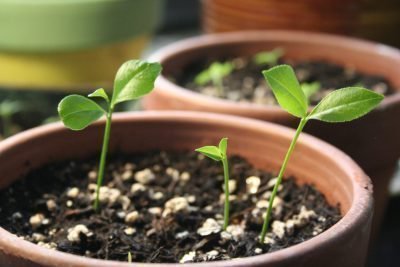

When the tree reaches 15–20 cm in height, you can transplant it into a larger pot. For active fruiting, it should be transplanted 2 times a year.
The tree can bear fruit after 3 years, but experts advise removing the first flowering from the tree, leaving only 2-3 flowers. A young lemon cannot withstand heavy loads yet. By cutting off inflorescences, a person allows the tree to grow stronger.
Copper wire is used for ringing lemon
There are many varieties. Below are some of them that are suitable for growing in a house or apartment:
- Pavlovsky - differs from other varieties in its large fruits, which can reach 500 grams, has a sweetish taste, and the tree of this variety is quite large - more than 2 meters. This variety is distinguished by fragrant leaves. The scent is so strong and strong that the whole house will be filled with it.
- Meyer - a hybrid of lemon with grapefruit, has a sweet and sour taste, a small tree with a rich harvest, the size of one lemon can reach 150 grams, blooms in bunches, there is a seasonal dormant period.
- Ponderosa is a hybrid of lemon with grapefruit, it has a bitter taste, as well as the presence of a large number of seeds. Pleases that it constantly blooms. According to the people who grow this type of lemon, it is a very grateful plant and quite unpretentious.
- Genoa is a medium-sized tree that gives a large harvest already for 4-5 years of life. Fruits with delicate pulp, have a sour, aromatic taste. You can also eat the rind. This variety is considered not whimsical. For 2-3 years, the seedling is already blooming.
- Jubilee - a medium-sized tree, considered a variety that gives a rich harvest, the fruit is distinguished by its thick skin. Very suitable for growing in a house or apartment.
After the stage of choosing the variety has been passed, it is necessary to proceed to the very planting of the seeds in the pot.
Varieties that are suitable for growing in a house or apartment: Pavlovsky, Meyer, Genoa, Yubileiny, Ponderoza
Many people think that growing a lemon from a seed is a thankless job. Since it will take 5, 7, or even all 15 years to wait for fruits from such a lemon, and its fruits will be small in size.
In order not to wait for decades when the lemon tree begins to bear fruit, it must be grafted. This can be done in two ways during the warm season (summer or warm spring):
- Splitting is the preferred form of grafting. It is necessary to take a stalk of a cultivated fruiting lemon. A branch is cut on the seedling, and the remaining stem of the seedling is split. A "wedge" is sharpened on the cutting of a fruiting lemon, which is then introduced into the split in the stem. Next, you need to tie the vaccine with electrical tape. 2-4 buds are left on the cutting of a fruiting lemon, everything else is cut off. The inoculation is covered with a plastic bag. When the vaccine has healed, the bag can be removed.
Lemon grafting - by budding or splitting - is necessary for early fruiting
- By budding - the shoots are cut off from the seedling, a 10 cm high "stump" remains from the tree. Then, a sprig of cultivated fruit-bearing lemon is taken. Under each leaf of the twig is the so-called "dormant bud". A slice must be made in front of this kidney. Next, cut off the leaf plate, but leave its petiole. Cut the bark on the "stump" of the seedling and insert the petiole with the cut down. Tie the vaccination site with electrical tape. The stalk of the cut leaf plate will serve as an indicator. If the petiole falls off after 2-3 days, then we can assume that the vaccination was successful, but if it dries up, then the vaccination has failed and must be repeated.
Interestingly, the grown lemon from the seed adapts to home conditions faster and better, it is less picky than cuttings and grafted seedlings.
In the video below, the author not only shows young lemon plants, but also talks about his technique of growing them - in ordinary dishwashing sponges.
Recommendation: it is advisable to grow several seedlings at once, because if you are inexperienced in growing citrus, while the time passes from seed to fruit, a lot of trouble can occur with a tree. Diseases, mistakes in care, finally, a mistake in grafting and the plant will die. It will be nice to have a "stock".
Two shoots may appear from one seed, in this case the weaker shoot should be removed.
Read more: Kishmish Zaporozhye grapes variety description
Lemon trees are very popular as indoor plants, in particular, because they are remontant, that is, they bear fruit all year round.
But be prepared that the plants grown at home from the seed will bloom and give a harvest, at the earliest - in 8 years! In addition, seed plants do not 100% preserve the characteristics of the variety, which means that they can lose both in the size of the fruit, and in yield, and in taste. A plant grown from a cuttings will yield an average harvest in 4-5 years.
Propagation of lemons by cuttings - this method allows you to quickly achieve fruiting. Plants from cuttings bear fruit for 4-5 years. The only "but" - for this you need to have on hand a high-quality lemon tree that has already yielded fruit, or contact a special nursery and purchase a cutting.
Vaccination is the fastest, albeit one that requires practice, method - until active fruiting in this case is only 2-3 years. Seedlings are grafted at the age of six months to three years - this is the best time for the survival of the scion. Thus, you can get fruits from seedlings grown from seeds in record time - in 2.5 - 3 years.
It happens that lemons bloom very early - such flowers should be removed, no matter how much you want to get golden fruits.But why risk the death of the plant? Fruiting requires strength, a well-formed crown and a sufficient amount of green mass, if there are less than 15 leaves per flower, flowers can be safely cut off. As a rule, flowers are removed up to 3, and preferably 4 years of age of the plant.
Their mass, and very many varieties can be grown indoors. Differences between varieties are usually in yield and fruit quality. The most famous varieties (descriptions and harvest dates refer to trees grown from seedlings):
- Pavlovsky is a classic, a very old variety, perfectly adapted to rooms, relatively well tolerates dry air and low light, which is inevitable in an apartment. The plant is large, up to 2 m tall, yields fruits for 4 years, yield up to 40 fruits per year.
- Eureka is a relatively short lemon. Average yield, blooms early, in the third year, fruits of medium weight, tasty, very common outdoors in Europe.
- Meyer is a hybrid of lemon and orange. It is very popular as a pot plant. The fruit is larger and sweeter than lemon. Very productive, bears fruit for 4 years (we are talking about a tree grown from seeds).
- Novogruzinsky is a large tree, fruits for 4-5 years, tasty and aromatic, without seeds. Productivity is high (up to 200 per year).
- Maikop - it has a high yield, up to 300 fruits per year, rather large fruits, the variety is unpretentious.
- Genoa is another low variety, up to 3 meters (in rooms up to 1 meter), fruits - in the fifth year, up to 50 fruits per year, medium-sized fruits, but tasty, blooms profusely.
Lemon seedling feeding mode
Remember, in order to grow a lemon from a seed, an emerging seedling must be fed, but competently and observing the terms and rules:
- do not feed anything in the first months of sprout development;
- in the continuation of the development of the lemon seedling, minimal feeding in the spring and summer is allowed once every two weeks, avoiding an overdose - it is better to underfeed than overfeed;
- in the autumn, the minimum subcortex is once a month.
We must not forget that the lemon tree is very demanding on the mode of care in all directions and will react to the slightest deviations from it (excess sun, uncomfortable temperature, air humidity, draft or strong wind), which can cause its complete leaf fall.
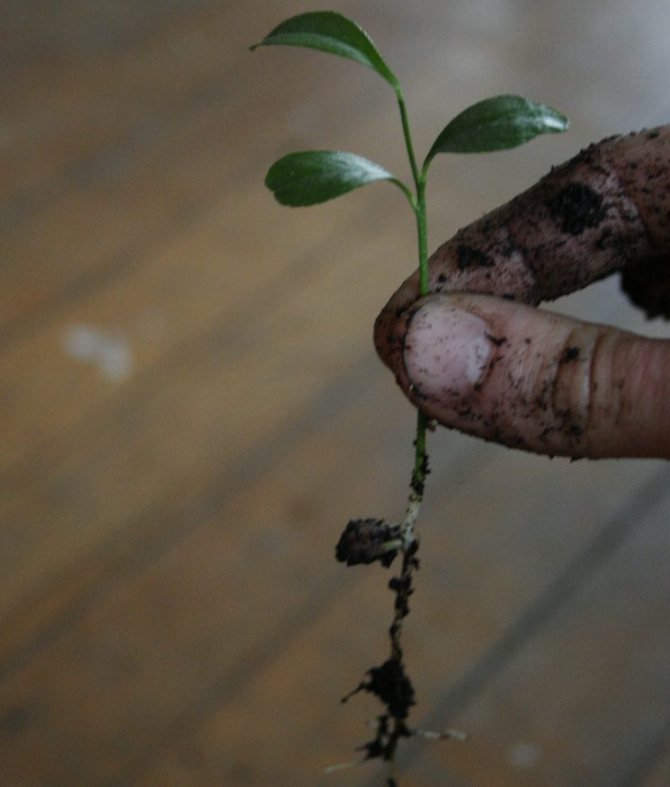

How to plant plant seeds: highlights
Some active citrus growers with rich experience advise freeing the seed from the upper husk, which, in their opinion, allows you to get seedlings in the shortest possible time.
This must be done very carefully, since any damage to the seed can lead to the fact that the seed does not germinate.
But you can plant bones without the above procedure.
Lemon seeds must be moist before planting. It is advisable to soak them for a day in water or in a solution of sodium humate. You can buy this growth stimulant at any botanical store.
But even if the seeds were planted without soaking, and as soon as they were removed from the lemon, they will most likely sprout.
Next, you need to find a suitable small, shallow pot or glass, pour earth into it. There should be holes in the bottom of the pots. They are important so that excess moisture, due to which the roots of the sprouts may die, flows down.
Make holes in the bottom of the pot, fill with small pebbles, soil
Put 1.5-2 cm of expanded clay, small pebbles or very coarse sand on the bottom of the pot. You can buy soil for planting in a store, or you can prepare it yourself. To do this, you need to mix garden soil, sand, humus and a little charcoal.
It is better to plant seeds to a depth of no more than 1.5-2 cm. It is important to moisten the soil before planting. It should not be dry, but excessive moisture is also undesirable.
The pot can be covered with plastic wrap. The air temperature in the room where the pit pot is located should be above 18 ℃.
It is necessary to spray the soil once every 2-3 days. If the ground has become completely dry, then you can water it a little. After the first shoots appear, the film must be removed.
It is better to rearrange the pot with sprouts in a bright place and water with settled or rain water, at room temperature.
The first shoots will sprout no earlier than 3-4 weeks after planting.
According to experienced citrus growers, the best time to plant a lemon is late winter, early spring. Since the increasing daylight hours will only benefit the young sprouts that have appeared.
Lemon gets sick if you do not follow the rules of care. If the tree is watered a little, it will dry out. If the soil in the pot is oversaturated with moisture, then yellow leaves will appear on the lemon, and this will be a sign that the roots of the tree are beginning to rot.
Also, the appearance of yellow spots on the foliage, after which the leaves dry and fall off, indicate that the tree does not have enough iron.
The dying ends of the leaves indicate that the tree needs phosphorus. A lack of potassium and manganese leads to wrinkling of the leaves and falling off of the ovary.
Read more: Garlic: Growing and Nursing Outdoors
Knowing how to grow a tree is not enough; it is important to be able to care for it. If a pest is noticed on the plant, it is necessary to figure out what kind of parasite it is and urgently take measures to combat it.
Below are some common parasites that can attack a home-grown lemon:
- Mealybugs, popularly known as "hairy lice" - on a tree they can be recognized by a white bloom. They prefer dry conditions, they are afraid of moisture. A good prevention of this parasite is to regularly rinse all the lemon leaves.
- Scabbard - small shiny droplets appear on the leaves, sticky to the touch. Leaves dry and fall off. Soapy or garlic water is used against this pest. Soapy water is prepared as follows: 2 tablespoons of liquid soap are dissolved in 1 liter of water. The resulting mixture is treated with the affected tree. An hour after the procedure, they are washed under the shower. It is desirable to repeat the treatment after 2 days.
- Spider mites are small, light dots on the leaf plate. The leaves are curling up. A cobweb is visualized on their back. If this parasite is found on the lemon, it is necessary to treat the tree with sulfur. For prevention purposes, the lemon is washed under running water, paying more attention to the underside of the leaf plates of the tree. Spraying with a solution of water and laundry soap helps to fight the mite well.
Common parasites that can attack home-grown lemon: mealybugs, scale insects, spider mites
Prevention measures
There are several simple preventive measures that will prevent the attack of parasites or damage to the tree by diseases:
"Fitosporin" is considered a good remedy for many diseases and pests. It is non-toxic and odorless. It is also good for prevention.
A lemon tree is not a geranium, it needs competent care and it is very difficult for a beginner to figure out what, how and when to do it.
With the effort and study of the rules for caring for lemon, you can get a pleasant result. Home-grown lemon will delight not only with its aroma, but also with delicious fruits.
Hello!
Today I want to tell you in detail how to grow a lemon from a seed at home. Yes, not just a lemon, but a real tree with fragrant and healthy fruits. Last year I wrote about growing tangerine from seed and in the comments there was a request to tell about lemon.There are some points to consider in order to drink tea with your lemons in a few years.
Planting procedure step by step
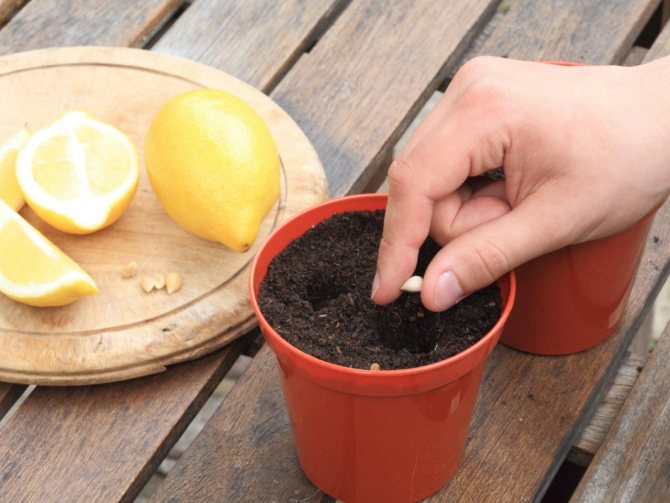

Planting lemon seeds
- Make sure there are holes in the landing pans for fluid outflow.
- Place a drainage layer on the bottom to prevent moisture stagnation.
- Fill containers with prepared substrate.
- Deepen the bones 1 - 1.5 cm.
- Moisten the soil.
- Cover the planting containers with plastic wrap or cut-off plastic bottles. Make improvised mini greenhouses.
- Leave it on for 3 - 4 weeks, remembering to ventilate every day and, if necessary, moisten the soil.
Usually the seeds germinate after 3 - 4 weeks, but sometimes the seedlings will have to wait longer. This run is due to varietal characteristics, seed quality and environmental conditions. At this stage of plant development, the degree of illumination does not matter, but this cannot be said about the temperature. Bones hatch only when the air in the room is warmed up to 18 - 26 degrees.
Seed selection
A lemon grown from a seed can produce up to 8 kg of fruit per season, if the planting material was chosen correctly, and the care met all the requirements. Anyone who has decided to grow lemon needs to choose the right planting material:
- choose seeds only of a fruiting variety that can be grown at home;
- you can only remove seeds from ripe fruit;
- sowing requires 10-15 large seeds.
We must not forget that how the tree will grow depends on the correct choice of the variety. Do not immediately expect active fruiting. The first crop will appear only 5–8 years after planting.
The pit should be taken from ripe fruit
Plant features
Lemon is a relatively small tree of the Rute family, to which the genus Citrus belongs.... His homeland is the tropics of the Pacific Islands, as well as China and India. But wild lemons are almost never found in nature. Botanists report that, most likely, the lemon is an accidental hybrid that has been developing as a separate species for some time. Now this plant is cultivated by agronomists, mainly in warm countries. A large harvest of this fruit is harvested in the world every year - up to 14 million tons. And most of all lemons are harvested in Mexico and India.
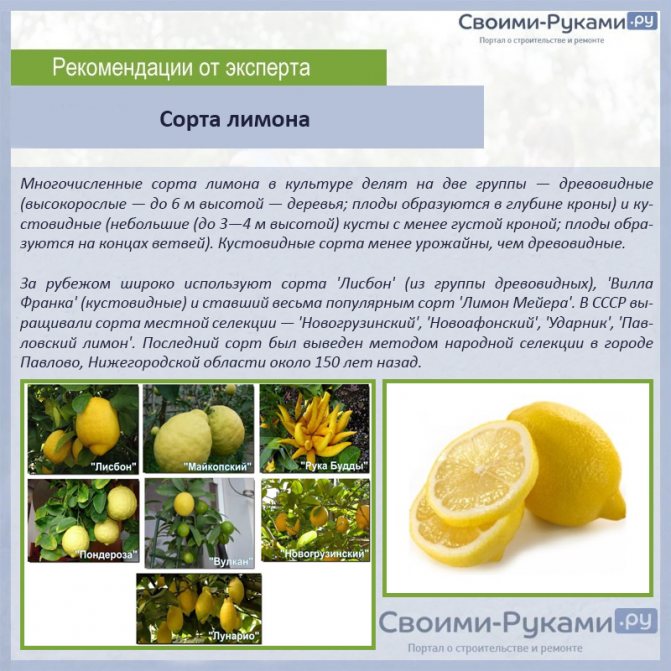

Lemon varieties
On a note! When growing a lemon in an open field, an adult tree can produce about 250-300 fruits per season - this is its yield.
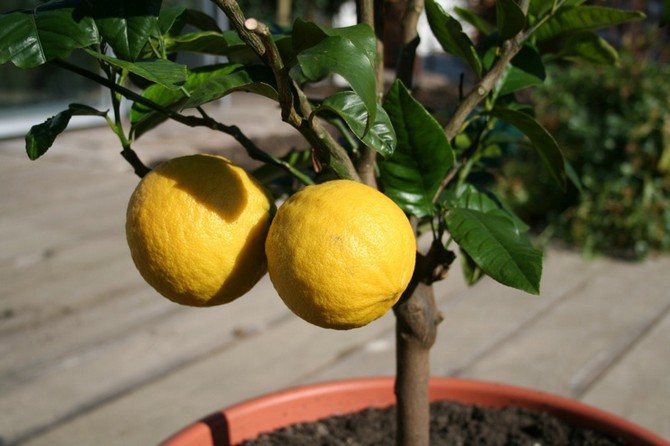

Lemon
A lemon tree can reach 8 m in height, but at home it rarely exceeds 3 m. It lives a long time - sometimes the life of one tree can reach 45 years. The crown is spreading, often in the shape of a pyramid. Lemon leaves are remarkable - they are quite fleshy, bright green, glossy on the outside and matte on the underside, slightly elongated and having a pointed tip. The length of one leaf plate varies between 10-15 cm, and the width is about 5-8 cm. If you crush a lemon leaf in your fingers, you can feel the distinct smell of this citrus. Lemon blooms with white flowers, which may have a slight beige or pinkish tint. The aroma is light and pleasant.
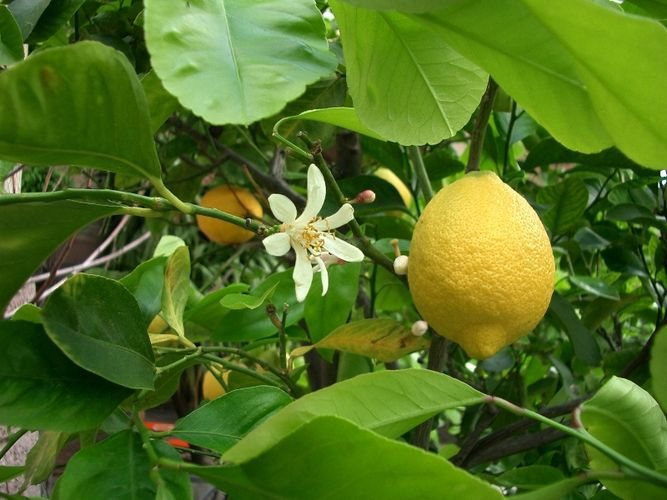

A lemon tree can live up to 45 years
Lemon bears fruit with oval-shaped fruits with narrowed ends up to 6-9 cm in size. At the top of each fruit there is a kind of "nipple". Color - yellow of various shades. The crust is dense and very aromatic due to its high content of essential oils. Inside the fruit has "nests" filled with juicy bubbles of pulp, which has a yellowish-greenish color.
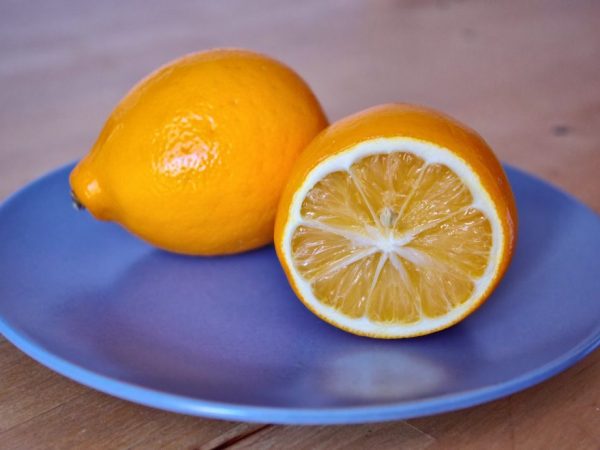

Tashkent lemon
At home, lemon is able to bear fruit quite often. True, the fruits are often more green than yellow, but more often they are simply not allowed to ripen.Homemade fruits can be eaten. Fruiting usually occurs only once a year. Nowadays, the usual non-fruiting lemon tree does not surprise any gardener, but if the tree bears fruit, this is already more interesting. In any case, lemon can beautify any home if it is properly grown and well looked after.
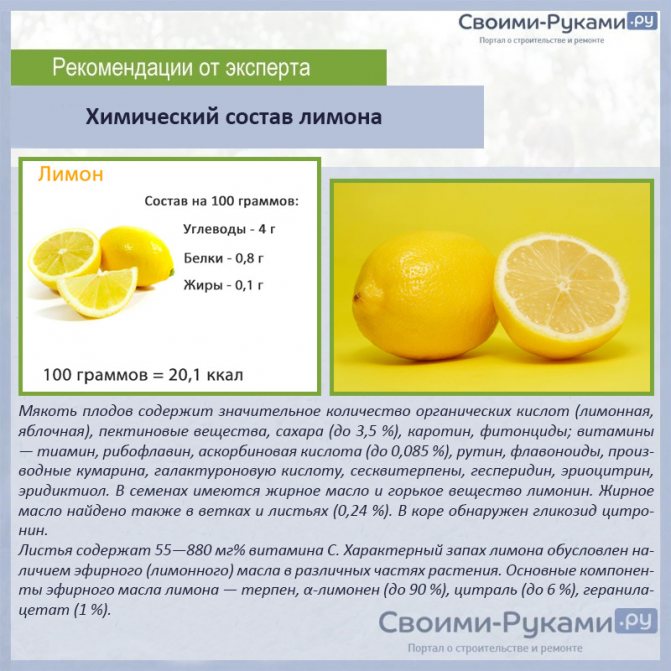

The chemical composition of lemon
Optimal growing conditions, care after planting
It is advisable to be very attentive to a lemon that has risen in a pot. When 3-4 leaves appear on the lemon seedlings, they are transplanted into separate pots.
It is recommended to replant young lemon trees up to 2 times a year. It is advisable to do this very carefully so as not to damage the root system.
Typically, lemon can react to both extreme heat and sunlight, as well as cold and strong winds. Therefore, when changing the location of the lemon pot, it is advisable to keep this in mind.
And the best solution would be not to change the place of "residence" lemon. The best place for a lemon would be the south or southwest side of the apartment. In terms of temperature, lemon can tolerate temperatures from 14 ℃ to 27 ℃.
The best place for a lemon would be the south or southwest side of the apartment.
Lemon is provided with conditions without sudden temperature jumps, as they can kill him. It is desirable to maintain a moderate air humidity of 60-70%.
It is best to water the plant with rainwater at room temperature. In hot summer, it is better to do this 2 times a day. And on cloudy and cold days, it is important to add lighting to lemon with LED or fluorescent lamps.
In the summer, you can feed the seedling with a solution of humus and liquid mineral fertilizers.
Lemons, like all houseplants, are susceptible to disease and pest attacks. Therefore, they need careful care, and it is also recommended to carefully examine the plant every day in order to detect the appearance of this or that pest as early as possible and take the necessary measures in time.
Transfer
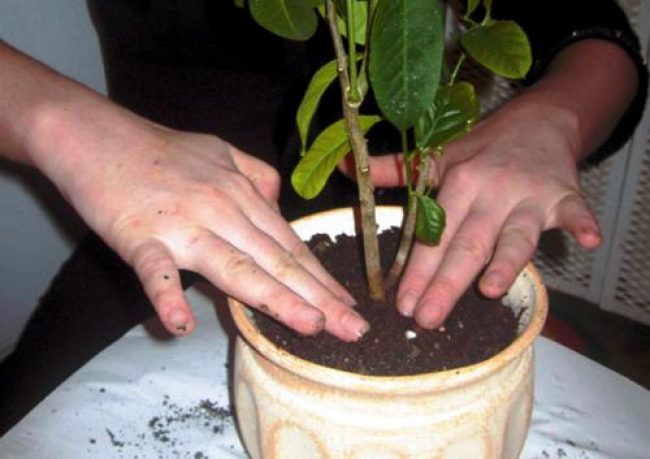

Adult lemon transplant process
Young lemons are often transplanted. In the first year of life, you may need to repeat this procedure 3 to 4 times. The first of them is carried out when 2 pairs of true leaves appear on the plant (one month after germination).
The seedlings are transplanted by the transshipment method. Indeed, with this method, the root system is not injured, mycorrhiza is not disturbed, and the plant is practically not stressed. To do this, moisten the soil, and then carefully crumple the pot with your hands, after which the lemon can be easily removed from the planting container along with an earthen lump.
Lemon has a shallow root system, which means it does not need deep pots. It feels much better in a container that has the same height and width.
Each subsequent transplant is performed when the roots begin to be seen from the drainage holes, picking up a pot 3-4 cm larger. As the lemon grows older, the intensity of transplants is reduced, and after the tree reaches 6-7 years of age, they stop altogether. From this time on, it is enough just to regularly pour fresh soil into the tub with the plant.
Temperature regime for seedling growth
Indoor citrus fruits do not tolerate sharp fluctuations in temperature. A window open in winter can cause all the leaves to fall off.
In the spring, when all plants begin to bloom, the lemon should be kept at a constant temperature of +14 to + 18 ° C. It is not recommended to take seedlings out into the open air.
Important! Lemon does not tolerate direct sunlight as well as full shade. It is best to place the plant pot in a corner with diffused light.
In winter, the air temperature should be 14-16 ° C. When the heating is running, it is better to spray the bush with settled water every day.
In summer, citrus can be placed outside or on a balcony if it will not be exposed to direct sunlight.
Fruiting
With proper care of the plant, it is possible to grow a lemon from a store seed, which will bear fruit. True, the plant will give its first fruits at home no earlier than after 8-10 years.
To stimulate an earlier fruiting process, lemons are grafted. Vaccinations are made to other citrus fruits: tangerine or grapefruit. For vaccinations to give a positive result, they are carried out in the spring or summer.
There is another way for a lemon to bear fruit - pinching. In addition, after such manipulation, the lateral shoots (of the second order) are pinched to a length of 18 cm. The procedure is repeated until the branches of the 4th order appear. The first flower buds are formed on them, and then the fruits.
Further care of the lemon
To achieve the appearance of fruit in a lemon, you must adhere to the rules for its care. Let's list the main ones.
Watering
Moderate watering is recommended - 3 times a week, on hot days - every other day, in winter - 2 times a week. Waterlogging leads to root rot.
It is difficult to provide a clear timetable. It is important to determine the degree of soil moisture. They check it like this: put a finger in the ground. Water the plant if it is found that it is dry at the depth of the phalanx. Do not allow the rest of the water in the sump.
For irrigation, do not use water from an artesian well, with a high salt content, as well as from a tap with a high concentration of chlorine. Filtered or settled water at room temperature will do.
To soften the water, add nitric acid to it before watering (3 ml per 10 l of water). You can replace it with oxalic acid (1 teaspoon) or acetic acid (3 tablespoons).
Lighting
In the period from October to March, additional lighting is provided using fluorescent lamps. In the morning they illuminate for 2 hours, and in the evening - for 3. A tangible effect is achieved by creating reflectors made of foil.
A suitable place to place a lemon is the sills of windows facing east and west.
To avoid burns on the leaves, it is important to protect the plants from direct sunlight.
Temperature regime
In the warm season, the air temperature comfortable for lemon is 18-23 ° C. In winter, with the onset of a dormant period, this figure is reduced to 10 ° C. The low temperature promotes the laying of fruit seeds.
When the plant is near the battery and on hot summer days, they produce moisture around it. In the summer they take him out into the street. However, the air temperature should not exceed 30 ° C.
Top dressing
For two months after the appearance of the first sprouts, feeding is not carried out, then once every 2 weeks. Use complex fertilizers "Zdraven", "Ideal" or specially designed for citrus fruits with the addition of trace elements - manganese, boron, zinc.
Between February and September, during active growth, lemon needs fertilizing with mineral fertilizers (1-2 g per 1 liter of water). It is useful to alternate with infusions consisting of organic fertilizers.
From November to January, feeding is stopped. Only 1-2 times per winter are fertilized with ash. Take 1 tablespoon of ash, dissolve in 1 liter of water, leave to brew overnight. Pour lemon in the morning.
Crown formation
A seedling of the first year of life requires crown formation. To do this, pinch the top of the central shoot, leaving 20 cm from the ground. It is convenient to perform this procedure with tweezers. Its purpose is to achieve lateral branching.
When the branches of the second and third order grow up to 18 cm, they are also pinched. On the shoots of the fourth order, buds are laid, and fruits are tied.
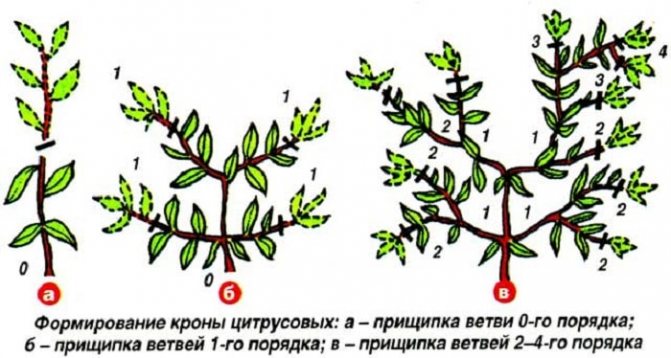

Lemon crown formation
Branches growing vertically and inward are removed. Some gardeners have recommendations to bend vertically growing branches by tying them to a stick stuck in the ground.
Gardening tips for care features
To accelerate fruiting, the ringing method is used.It consists in the fact that the trunk at the base is wrapped with wire, making sure that it does not stick too much into the bark. After 6-12 months, the ring is removed. Slight deformation does not harm the plant, but the number of budding buds increases.
Additional care advice:
- Wipe dust off the leaves weekly.
- Often do not move the lemon pot. It is enough to turn it a little (no more than 10 °), avoiding a sharp change in the light regime. This is necessary for uniform crown formation.
- Regular transplantation - 1-2 times during the year.
Do not transplant the plant directly into a large container. The size of the pot is increased by 3-5 cm each time you transplant.
This is the most common mistake gardeners make when growing pitted lemon. The normal flowering ratio is 1 flower for 15 or more leaves.
Suitable variety for a house or apartment: Pavlovsky, Meyer and others
There are many varieties. Below are some of them that are suitable for growing in a house or apartment:
- Pavlovsky - differs from other varieties in its large fruits, which can reach 500 grams, has a sweetish taste, and the tree of this variety is quite large - more than 2 meters. This variety is distinguished by fragrant leaves. The scent is so sharp and strong that the whole house will be filled with it.
- Meyer - a hybrid of lemon with grapefruit, has a sweet and sour taste, a small tree with a rich harvest, the size of one lemon can reach 150 grams, blooms in bunches, there is a seasonal dormant period.
- Ponderosa - a hybrid of lemon with grapefruit, has a bitter taste, as well as the presence of a large number of seeds. Pleases that it constantly blooms. According to the people who grow this type of lemon, it is a very grateful plant and quite unpretentious.
- Genoa - an average tree, gives a large yield already for 4-5 years of life. Fruits with delicate pulp, have a sour, aromatic taste. You can also eat the rind. This variety is considered not whimsical. For 2-3 years, the seedling is already blooming.
- Anniversary - a medium-sized tree, considered a variety that gives a rich harvest, the fruit is distinguished by its thick skin. Very suitable for growing in a house or apartment.
After the stage of selecting the variety has been passed, it is necessary to proceed to the very planting of the seeds in the pot.
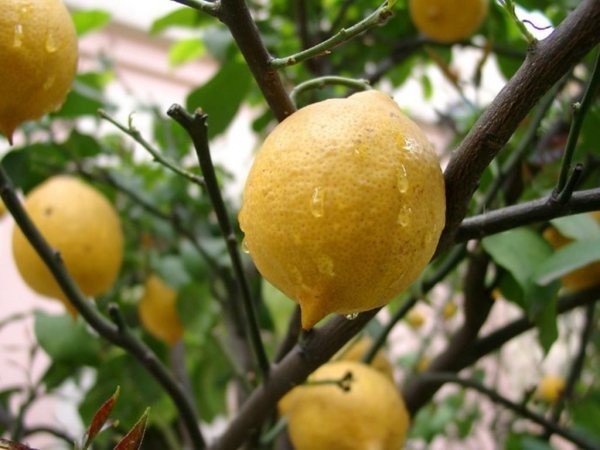

Varieties that are suitable for growing in a house or apartment: Pavlovsky, Meyer, Genoa, Yubileiny, Ponderoza

